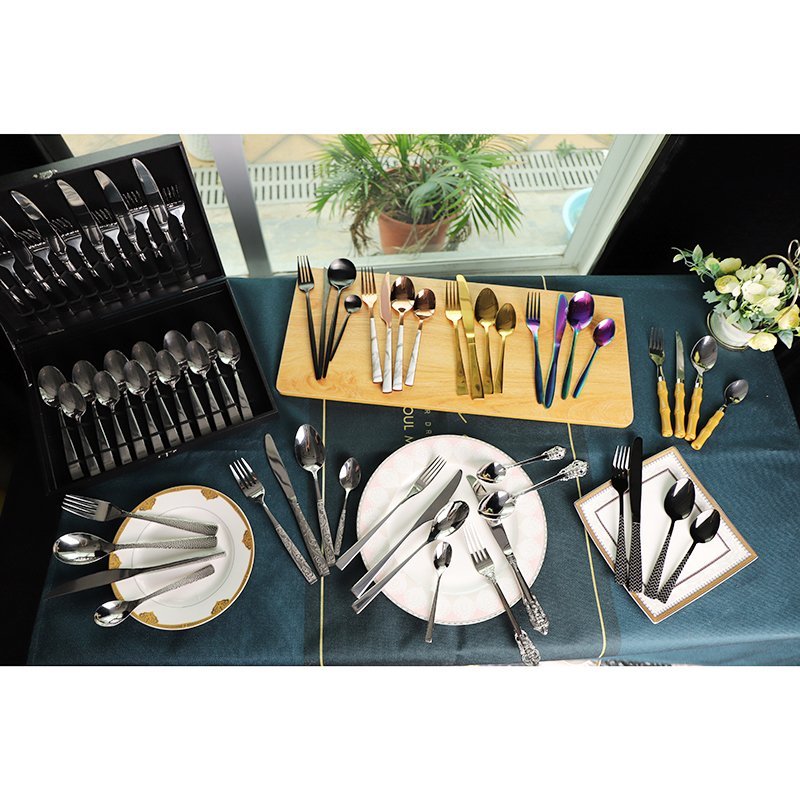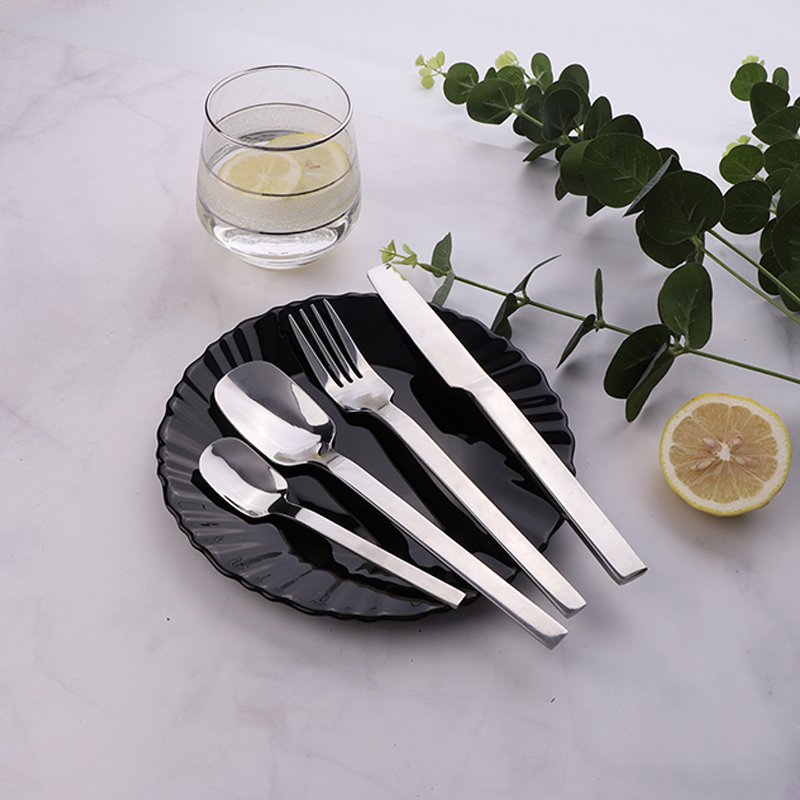Pulished on Aug. 15, 2020
The most commonly used raw materials for tableware are 13/0 (410), 18/0 (430), 18/8 and 18/10 (304). In addition, there are many other materials with different uses and prices. For example, 420 (containing carbon) is only suitable for knives, and 201 is a substitute for 304, but it is easy to rust. Because they are all non-magnetic, there is no difference in the surface effect; 201 is the cheapest with good price, but 201 is the most prone to problems and rust. 316 is mainly the raw material for scalpels.

The actual process of making stainless steel cutlery requires 50-60 processes, but it can be divided into the following major categories. Let’s explain the production process of stainless steel cutlery.

1. Raw material cutting: (refers to the production of raw materials that are punched and cut out to the specified size by a machine through a mold)
2. Rolling: (refers to the product being rolled by a machine to extend the width and length of the production) After the first process, the material becomes the size of the tableware, but the thickness does not change. The tableware sold at present are all thick and thin, that is, the head and handle of the tableware are different in thickness. Generally, the thickness of the head is 0.8-2.0MM, which is smaller than the thickness of the handle. Therefore, a second process is required.
3. Trimming: (refers to the use of a machine to punch the product into a prescribed shape) After rolling, the basic shape of the tableware comes out.
4. Making pattern: (referring to the product using a machine to extrude the specified pattern through a mold) After trimming, you can distinguish between knives, spoons and forks. But it is still in the shape of the blank, and the handle has no pattern shape.
5. Edging: (refers to products made by polishing the whole side of the tableware by polishing machines and polishing materials)
6. Forming: (refers to the production of the product using the machine to extrude the specified shape through the mold) After the edge is polished, the knife can be directly exposed by only opening the teeth, but the spoon and fork are not enough, and the spoon needs the mold to press the spoon head To form a bowl shape and an overall curve, the fork also needs a mold to extrude the overall curve. So this process is called. Molding is related to the overall look and feel of the product.
7. Polishing: (refers to the product made by the polishing machine and polishing material to the overall surface polishing)
After all the above processes, the tableware has no brightness at this time, so the final polishing process is required.
The above has probably explained the production process of stainless steel tableware. It is conceivable that every stainless steel tableware we commonly use is not easy to come by. It can only be produced after repeated polishing. It is not only the cost of materials, but also the workers. The finished product of hard work.